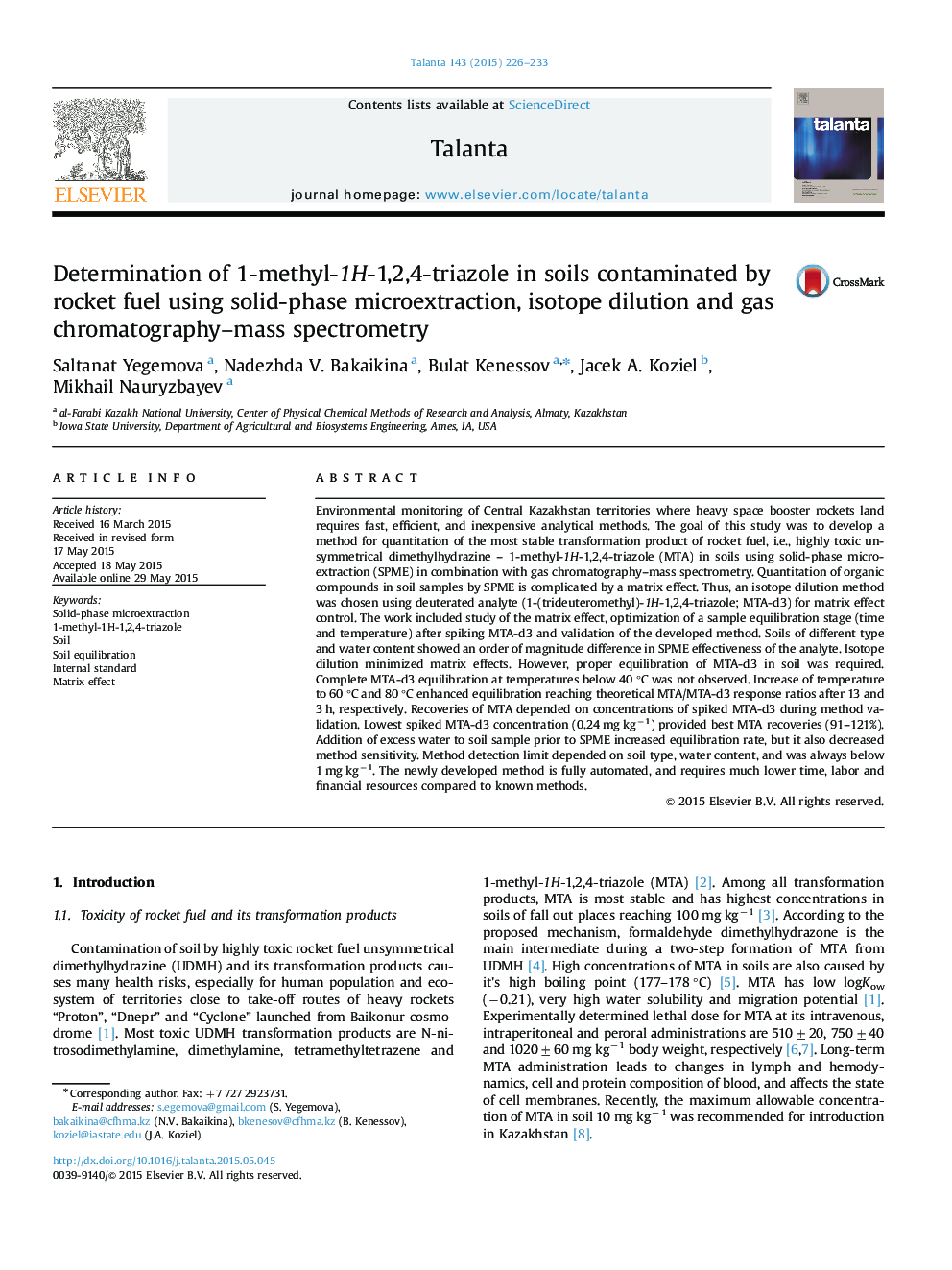| کد مقاله | کد نشریه | سال انتشار | مقاله انگلیسی | نسخه تمام متن |
|---|---|---|---|---|
| 1241879 | 1495792 | 2015 | 8 صفحه PDF | دانلود رایگان |

• Key transformation product (MTA) of rocket fuel in soil was quantified.
• Analyte extraction effectiveness from soils varies by an order of magnitude.
• Isotope dilution was used to control matrix effect.
• Soil must be equilibrated at T>60 ⁰C.
• Concentration of added internal standard 0.24 mg kg-1 provides highest accuracy.
Environmental monitoring of Central Kazakhstan territories where heavy space booster rockets land requires fast, efficient, and inexpensive analytical methods. The goal of this study was to develop a method for quantitation of the most stable transformation product of rocket fuel, i.e., highly toxic unsymmetrical dimethylhydrazine – 1-methyl-1H-1,2,4-triazole (MTA) in soils using solid-phase microextraction (SPME) in combination with gas chromatography–mass spectrometry. Quantitation of organic compounds in soil samples by SPME is complicated by a matrix effect. Thus, an isotope dilution method was chosen using deuterated analyte (1-(trideuteromethyl)-1H-1,2,4-triazole; MTA-d3) for matrix effect control. The work included study of the matrix effect, optimization of a sample equilibration stage (time and temperature) after spiking MTA-d3 and validation of the developed method. Soils of different type and water content showed an order of magnitude difference in SPME effectiveness of the analyte. Isotope dilution minimized matrix effects. However, proper equilibration of MTA-d3 in soil was required. Complete MTA-d3 equilibration at temperatures below 40 °C was not observed. Increase of temperature to 60 °C and 80 °C enhanced equilibration reaching theoretical MTA/MTA-d3 response ratios after 13 and 3 h, respectively. Recoveries of MTA depended on concentrations of spiked MTA-d3 during method validation. Lowest spiked MTA-d3 concentration (0.24 mg kg−1) provided best MTA recoveries (91–121%). Addition of excess water to soil sample prior to SPME increased equilibration rate, but it also decreased method sensitivity. Method detection limit depended on soil type, water content, and was always below 1 mg kg−1. The newly developed method is fully automated, and requires much lower time, labor and financial resources compared to known methods.
Figure optionsDownload as PowerPoint slide
Journal: Talanta - Volume 143, 1 October 2015, Pages 226–233